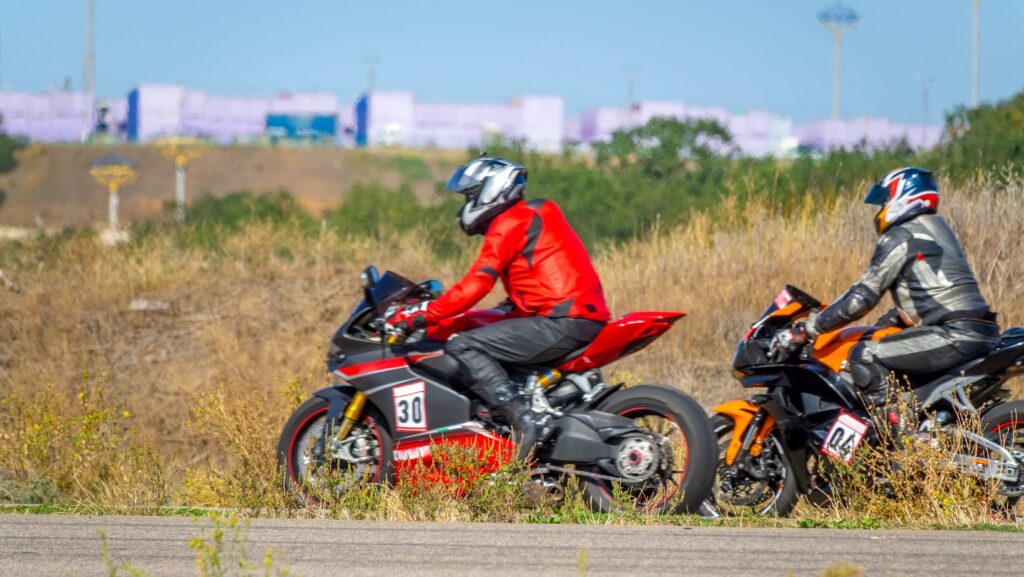Riding a motorcycle in adverse weather conditions presents unique challenges and risks. Whether it’s rain, fog, snow, or high winds, each type of weather can affect the motorcycle’s visibility, traction, and overall control. For motorcyclists in Columbus, where weather can be unpredictable, it’s essential to be prepared and know how to stay safe under these conditions.
In an accident caused by adverse weather, understanding your legal rights and options is crucial. Consulting a Columbus motorcycle accident lawyer can provide the necessary guidance and support to navigate the complexities of accident claims and ensure you receive the compensation you deserve for any injuries or damages sustained.
Preparing Your Motorcycle for Adverse Weather
Ensuring your motorcycle is ready for adverse weather is the first step in staying safe. Regular maintenance checks are essential. Ensure your tires are in good condition with adequate tread depth, which helps maintain traction on wet or slippery surfaces. Check your brakes to ensure they respond effectively, and verify that all lights, including headlights and brake lights, function properly for maximum visibility.
Equipping your motorcycle with appropriate gear can also make a significant difference. Installing anti-lock brakes can prevent wheel lockup during sudden stops on wet or icy roads. Consider using a windshield or fairing to reduce wind exposure and enhance stability. Regularly checking and replacing worn components can help prevent mechanical failures that could be disastrous in poor weather.
Wearing the Right Gear
Wearing the appropriate gear is essential for safety and comfort when riding a motorcycle in adverse weather. Proper gear helps protect you from the elements, enhances your visibility, and maintains your focus on the road. Here are some key pieces of motorcycle protective gear to consider:
- Waterproof and Windproof Clothing: Wear jackets and pants made from waterproof and windproof materials to stay dry and warm. This will reduce the risk of hypothermia and allow you to focus on the road.
- Reflective Elements: Choose gear with reflective features or add reflective strips to your clothing and bike to increase visibility, especially in low-light or rainy conditions.
- High-Quality Helmets: Select a helmet with a visor that resists fogging and provides a clear view, which is crucial for maintaining visibility and protection in poor weather.
- Gloves and Boots: Wear gloves and boots that offer good grip, are waterproof, and insulated. This keeps your hands and feet dry and warm, improving your control over the motorcycle.
- Layered Clothing: Layer your clothing for added warmth and flexibility. Base layers that wick moisture away from your skin can keep you dry and comfortable in changing weather conditions.
Adjusting Your Riding Style
Adapting your riding style to match the weather conditions is critical for safety. In rain or fog, reduce your speed and increase the distance between you and other vehicles to allow longer stopping distances. Smooth and gradual movements are key to maintaining control, as sudden braking or acceleration can lead to loss of traction.

In high winds, stay relaxed and lean into the wind to maintain balance. Avoid sudden maneuvers and be cautious around large vehicles, which can create turbulence that affects stability. Being aware of the impact of weather on your motorcycle’s handling and adjusting your techniques accordingly can help you navigate safely through challenging conditions.
Visibility and Awareness
Maintaining visibility and being aware of your surroundings is paramount in adverse weather. Keep your visor or goggles clean and clear to ensure the best possible view of the road. Use your headlights, even during the day, to increase your visibility to other drivers. Being seen is crucial when visibility is low due to fog, rain, or snow.
Constantly scanning the road for potential hazards, such as puddles, ice patches, or debris, allows you to anticipate and avoid dangerous situations. Stay vigilant about the actions of other drivers who may struggle with visibility and control. Enhanced awareness and proactive scanning help you react quickly to unexpected changes in the road environment.
Handling Specific Weather Conditions
Riding a motorcycle in Columbus can be challenging due to unpredictable weather. Each type of adverse weather condition—rain, snow, ice, fog, and wind—requires specific riding strategies to ensure safety. Knowing how to adapt your riding style to these conditions is crucial, especially when you need to drive during dangerous winter weather. Here’s how to handle these conditions effectively:
- Rain: Slow down to prevent hydroplaning. Increase your following distance to give yourself more reaction time and avoid sudden movements. Be vigilant for oil slicks and puddles that can reduce traction and stability.
- Snow and Ice: Significantly reduce your speed to maintain control. Avoid sudden braking or sharp turns that could lead to skidding. Use gentle throttle and brake inputs to maintain traction, and be extra cautious as you drive during dangerous winter weather.
- Fog: Use low-beam headlights to minimize glare and improve visibility. Ride at a speed that matches the distance ahead, ensuring you have enough time to react to obstacles. Keep your visor or goggles clean to enhance your view of the road.
- Wind: Brace for gusts by gripping the handlebars firmly and leaning into the wind to maintain balance. Adjust your speed as necessary and be particularly cautious when passing large vehicles or riding in open areas with higher wind exposure.
Planning Your Route and Timing
Planning your route and timing can help you avoid the worst weather conditions and enhance your safety. Check weather forecasts before heading out, and try to plan your ride during the best weather windows. Avoid areas known for flooding or poor road conditions during adverse weather.

Choose routes that offer more shelter from the elements, such as tree-lined streets or areas with buildings that can block the wind. Allow extra time for your journey to avoid the need to rush. Being flexible with your plans and adjusting them according to the weather can prevent unnecessary exposure to dangerous conditions.
Legal Support After an Accident
Seeking legal support is essential if you’re involved in an accident due to adverse weather. A motorcycle accident lawyer can help you understand your legal options and rights. They can assist in gathering evidence, dealing with insurance companies, and pursuing compensation for any injuries or damages incurred.
An experienced attorney will evaluate your case, provide guidance through the legal process, and advocate on your behalf to ensure you receive fair compensation. Navigating the aftermath of an accident can be complex, but professional legal support can help you manage the challenges and focus on your recovery.



